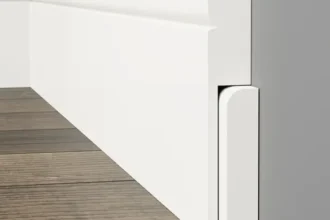How Humidity Affects Woodworm Infestations
Woodworms, the larvae of wood-boring beetles, pose a significant threat to wooden structures and furniture. One of the key environmental factors influencing woodworm infestations is humidity. Understanding how humidity affects woodworms can help homeowners and property managers take proactive measures to prevent infestations and protect their wooden assets. In this article, we’ll explore the relationship between humidity and woodworm activity, the implications for wooden structures, and strategies for management.
The Role of Humidity in Woodworm Life Cycle
1. Moisture Preference
Woodworms thrive in environments with higher humidity levels. While adult beetles can emerge from wood and lay eggs in various conditions, the larvae require moisture to survive and develop effectively. High humidity levels provide an ideal environment for woodworm larvae to feed and grow, as they rely on the cellulose found in wood for nourishment.www.shashel.eu
2. Impact on Egg Laying
Humidity also influences the reproductive behavior of wood-boring beetles. Female beetles are more likely to lay eggs in moist conditions, as higher humidity can enhance the survival rates of their offspring. This means that buildings with persistent moisture issues, such as damp basements or poorly ventilated attics, are at a higher risk of woodworm infestations.
3. Development and Growth Rates
In humid environments, woodworm larvae can develop more quickly. Ideal humidity levels can accelerate their growth, leading to larger populations in a shorter time frame. Conversely, in dry conditions, the growth of larvae can slow significantly, prolonging their development cycle and reducing the immediate risk of infestation.
Implications for Wooden Structures
1. Structural Integrity
High humidity levels can weaken wooden structures by fostering conditions conducive to woodworm infestations. As larvae feed on the wood, they create tunnels that compromise the integrity of beams, floorboards, and furniture. Over time, this damage can lead to significant structural issues, including sagging floors and weakened support systems.
2. Aesthetic Damage
In addition to structural concerns, woodworms can cause aesthetic damage to wooden items. The presence of exit holes and frass can mar the appearance of furniture and fixtures, reducing their value and appeal. This is particularly concerning for historical buildings and antique furniture, where authenticity and visual integrity are paramount.
3. Increased Maintenance Costs
Woodworm infestations, exacerbated by high humidity, can lead to increased maintenance and repair costs. Property owners may need to invest in pest control services, repairs, and preventive measures, all of which can strain budgets, especially in older buildings that are already costly to maintain.
Strategies for Managing Humidity and Woodworm Infestations
1. Humidity Control
Maintaining optimal humidity levels is crucial in preventing woodworm infestations. Aim to keep indoor humidity levels between 30% and 50%. This can be achieved through:
- Dehumidifiers: Use dehumidifiers in damp areas such as basements and crawl spaces.
- Ventilation: Ensure proper ventilation in attics and other enclosed spaces to promote airflow and reduce moisture buildup.
2. Regular Inspections
Conduct regular inspections of wooden structures and furniture to identify signs of woodworm infestations early. Look for frass, exit holes, and weakened wood. Early detection can help mitigate damage and control infestations before they escalate.
3. Proper Wood Treatment
When installing new wooden materials, consider using treated or resistant wood products. Preservatives can help deter woodworm infestations by making the wood less appealing to beetles.
4. Addressing Water Issues
If humidity levels are high due to water leaks or condensation, address these underlying issues promptly. Repair leaks, improve drainage, and ensure that gutters and downspouts direct water away from the foundation.
5. Consulting Professionals
For severe infestations, it may be necessary to consult pest control professionals who can assess the situation and recommend effective treatment options. They can also provide guidance on preventive measures tailored to your specific environment.
Conclusion
Humidity plays a crucial role in the life cycle and behavior of woodworms, significantly influencing the risk of infestations in wooden structures. By understanding this relationship, homeowners can take proactive steps to manage humidity levels and protect their properties from woodworm damage. Regular inspections, humidity control measures, and professional consultations can help safeguard wooden assets, ensuring their longevity and structural integrity.


